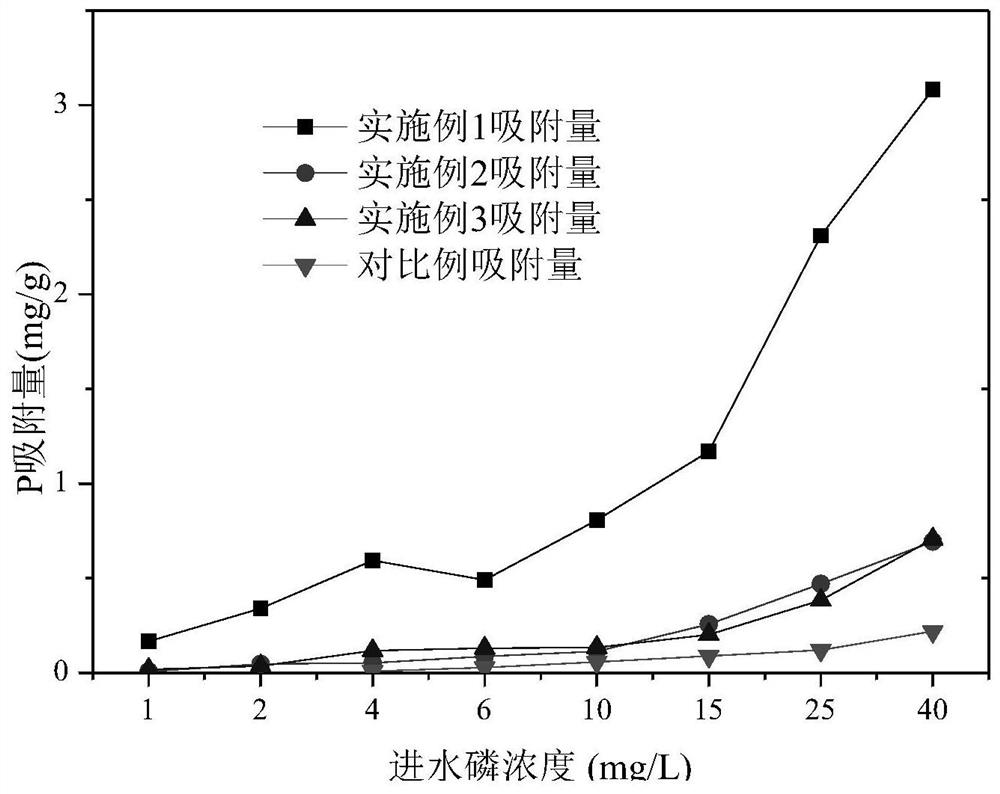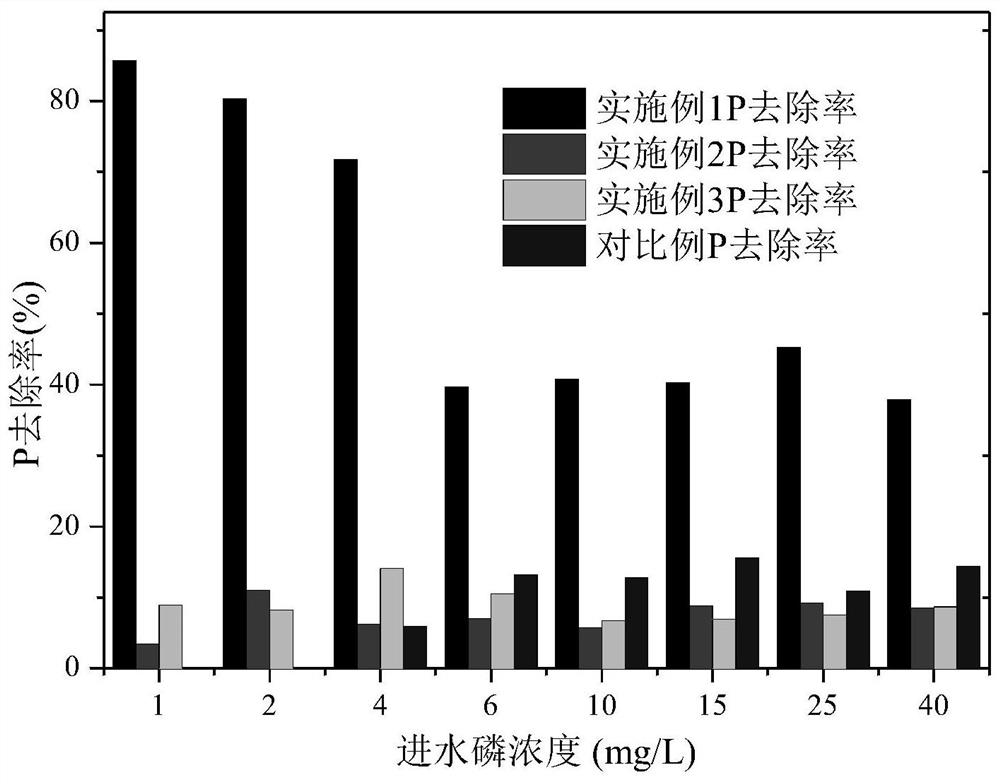Matrix filler and method for reinforcing constructed wetland dephosphorization by utilizing wetland plant thalia dealbata
A wetland plant and artificial wetland technology, applied in the field of water treatment, can solve the problems of low utilization rate of plant resources, secondary pollution, limited phosphorus removal capacity, etc., and achieve the goal of improving phosphorus removal capacity, saving operating costs, and improving reuse efficiency Effect
- Summary
- Abstract
- Description
- Claims
- Application Information
AI Technical Summary
Problems solved by technology
Method used
Image
Examples
Embodiment 1
[0020] The present invention uses the wetland plant Zailihua to strengthen the method for phosphorus removal in artificial wetlands, comprising the following steps: 1) cutting the aboveground part of the wetland plant Zailihua, processing it into powder, and placing it in an anaerobic high-temperature muffle furnace at 200°C 2) Soak the carbonized Zailihua powder in ferrous sulfate solution for 2 hours at a solid-to-liquid ratio of 1:10, wash with deionized water until neutral and dry to obtain a wetland matrix Additive; 3) Add the wetland matrix additive prepared in step 2) to the surface soil of the wetland matrix at a mass fraction of 5% and mix evenly.
Embodiment 2
[0022] The present invention uses the wetland plant Zailihua to strengthen the method for removing phosphorus in the constructed wetland. 1) Cut the above-ground part of the wetland plant Zailihua, process it into powder, place it in an anaerobic high-temperature muffle furnace, and carry out carbonization at 300 ° C for 6 hours Treatment; 2) Soak the carbonized Zailihua powder in a ferrous sulfate solution for 2 hours at a solid-to-liquid ratio of 1:10, wash it with deionized water until it is neutral, and dry it to obtain a wetland matrix additive; 3) The wetland matrix additive prepared in step 2) is added to the surface soil of the wetland matrix at a mass fraction of 5% and mixed uniformly.
Embodiment 3
[0024] The present invention uses the wetland plant Zailihua to strengthen the method for removing phosphorus in the constructed wetland. 1) Cut the above-ground part of the wetland plant Zailihua, process it into powder, place it in an anaerobic high-temperature muffle furnace, and carry out carbonization at 400 ° C for 6 hours Treatment; 2) Soak the carbonized Zailihua powder in a ferrous sulfate solution for 2 hours at a solid-to-liquid ratio of 1:10, wash it with deionized water until it is neutral, and dry it to obtain a wetland matrix additive; 3) The wetland matrix additive prepared in step 2) is added to the surface soil of the wetland matrix at a mass fraction of 5% and mixed uniformly.
PUM
| Property | Measurement | Unit |
|---|---|---|
| Thickness | aaaaa | aaaaa |
| Particle size | aaaaa | aaaaa |
| Particle size | aaaaa | aaaaa |
Abstract
Description
Claims
Application Information
 Login to View More
Login to View More - R&D
- Intellectual Property
- Life Sciences
- Materials
- Tech Scout
- Unparalleled Data Quality
- Higher Quality Content
- 60% Fewer Hallucinations
Browse by: Latest US Patents, China's latest patents, Technical Efficacy Thesaurus, Application Domain, Technology Topic, Popular Technical Reports.
© 2025 PatSnap. All rights reserved.Legal|Privacy policy|Modern Slavery Act Transparency Statement|Sitemap|About US| Contact US: help@patsnap.com


